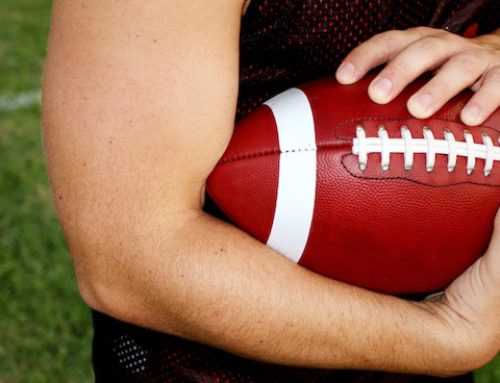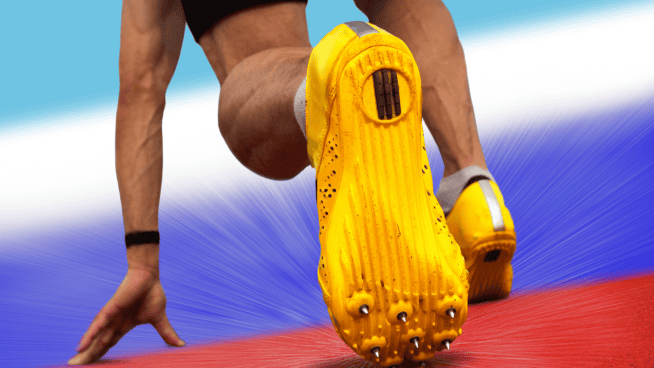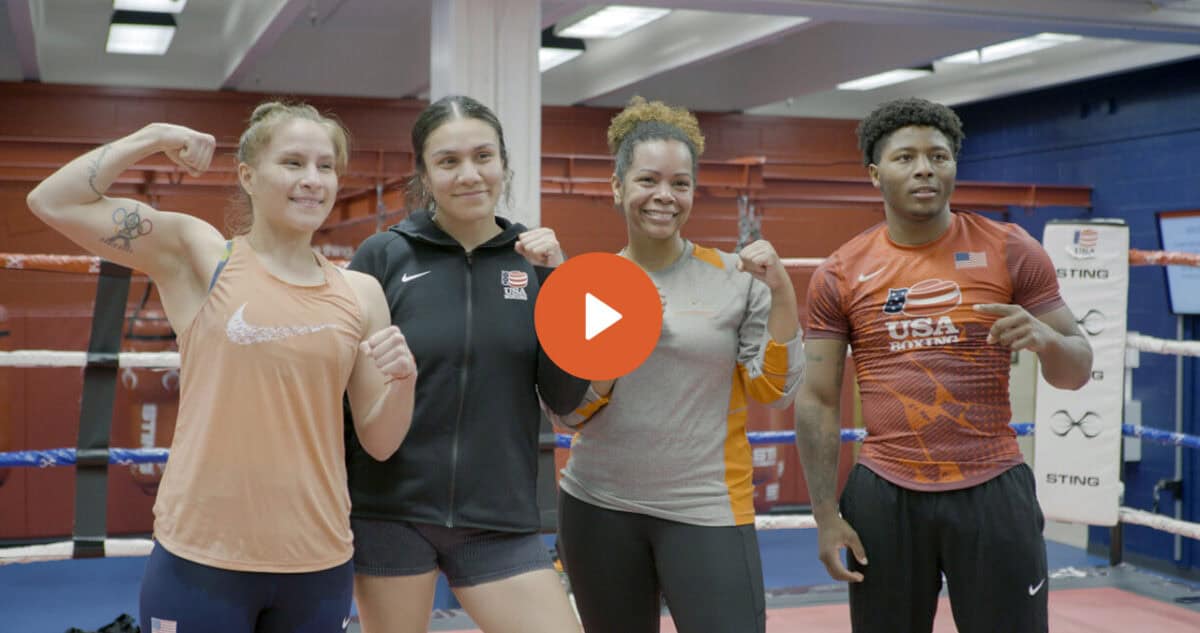Master the 4 Basic Boxing Punches
Before you can learn how to float like a butterfly and sting like a bee, you have to master the basic boxing punches. Practice these four boxing punches by developing proper technique, while improving speed, precision, power and balance.
Boxing Punches
Jab
The most basic punch in a boxer’s arsenal is the jab. The jab is a light, fast punch, meant to keep an opponent at bay and set up heavier punches. A series of well-placed jabs can put an opponent on the defense, allowing the fighter to work inside to the body. It’s most effective when it catches an opponent off guard, but beginners frequently telegraph their jabs by loading up their muscle immediately before throwing the punch. An observant opponent will notice the bicep or pectoral muscle twitch and be ready to block and counter punch. While you’re learning the jab, practice keeping your bicep loaded throughout the round, so it’s ready to snap out a jab at any time.
Heavy Cross
Once you have mastered the jab, you are ready to follow up with the heavy cross. The cross is thrown with the dominant hand and is more powerful than the jab. When throwing the cross, the fighter must use his legs to brace the punch. Because beginners often feel like they need to reach forward with their crosses to hit an opponent, they tend to extend their back leg and get up on their toes, leaving themselves wide open and unsteady for body shots. Stay grounded when throwing a cross by pivoting on your back foot as if grinding out a cigarette butt with the ball of your foot. This will help you maintain balance and add more power to the punch. (Check out these two drills to develop punching power.)
Hook
One of the most common mistakes new boxers make is drawing their arm back before throwing a hook. Not only does this telegraph the punch, it also saps the energy out of it. A powerful hook originates at the hip. Start by working on a tight inside hook while standing in front of the heavy bag. With hands up in guard, raise your elbow up to shoulder level, swivel your hip and let your arm go along for the ride. This puts the full power of the body behind the punch. Don’t forget to pull your arm back to guard immediately. Once this motion becomes fluid, step back from the bag and work on extending the hook further without winding up the arm. (See these other heavy-bag workouts.)
Uppercut
Many boxers telegraph their uppercut with an exaggerated scooping motion. Like the cross and hook, the uppercut needs to come from the body and be grounded by the legs. Whereas the hook’s power originates with rotation of the hips, the uppercut’s power comes from rotation of the shoulders. This is especially useful coming out of a weave or a slip. After weaving to the right, whip your left shoulder back in the other direction, allowing it to pull your right shoulder around, and drive your right arm into your opponent’s gut. Try again on the other side, then practice one after another, weave right, right uppercut, weave left, left uppercut. Then step away from the bag and use the same principles to throw the uppercut from farther away without resorting to a scooping motion.
Like everything in boxing, mastering these boxing punches takes extensive repetition. Practice them again and again on the heavy bag, double end bag and with mitts until they become second nature. Then practice some more.
Photo: socalboxing.wordpress.com
RECOMMENDED FOR YOU
MOST POPULAR
Master the 4 Basic Boxing Punches
Before you can learn how to float like a butterfly and sting like a bee, you have to master the basic boxing punches. Practice these four boxing punches by developing proper technique, while improving speed, precision, power and balance.
Boxing Punches
Jab
The most basic punch in a boxer’s arsenal is the jab. The jab is a light, fast punch, meant to keep an opponent at bay and set up heavier punches. A series of well-placed jabs can put an opponent on the defense, allowing the fighter to work inside to the body. It’s most effective when it catches an opponent off guard, but beginners frequently telegraph their jabs by loading up their muscle immediately before throwing the punch. An observant opponent will notice the bicep or pectoral muscle twitch and be ready to block and counter punch. While you’re learning the jab, practice keeping your bicep loaded throughout the round, so it’s ready to snap out a jab at any time.
Heavy Cross
Once you have mastered the jab, you are ready to follow up with the heavy cross. The cross is thrown with the dominant hand and is more powerful than the jab. When throwing the cross, the fighter must use his legs to brace the punch. Because beginners often feel like they need to reach forward with their crosses to hit an opponent, they tend to extend their back leg and get up on their toes, leaving themselves wide open and unsteady for body shots. Stay grounded when throwing a cross by pivoting on your back foot as if grinding out a cigarette butt with the ball of your foot. This will help you maintain balance and add more power to the punch. (Check out these two drills to develop punching power.)
Hook
One of the most common mistakes new boxers make is drawing their arm back before throwing a hook. Not only does this telegraph the punch, it also saps the energy out of it. A powerful hook originates at the hip. Start by working on a tight inside hook while standing in front of the heavy bag. With hands up in guard, raise your elbow up to shoulder level, swivel your hip and let your arm go along for the ride. This puts the full power of the body behind the punch. Don’t forget to pull your arm back to guard immediately. Once this motion becomes fluid, step back from the bag and work on extending the hook further without winding up the arm. (See these other heavy-bag workouts.)
Uppercut
Many boxers telegraph their uppercut with an exaggerated scooping motion. Like the cross and hook, the uppercut needs to come from the body and be grounded by the legs. Whereas the hook’s power originates with rotation of the hips, the uppercut’s power comes from rotation of the shoulders. This is especially useful coming out of a weave or a slip. After weaving to the right, whip your left shoulder back in the other direction, allowing it to pull your right shoulder around, and drive your right arm into your opponent’s gut. Try again on the other side, then practice one after another, weave right, right uppercut, weave left, left uppercut. Then step away from the bag and use the same principles to throw the uppercut from farther away without resorting to a scooping motion.
Like everything in boxing, mastering these boxing punches takes extensive repetition. Practice them again and again on the heavy bag, double end bag and with mitts until they become second nature. Then practice some more.
Photo: socalboxing.wordpress.com











